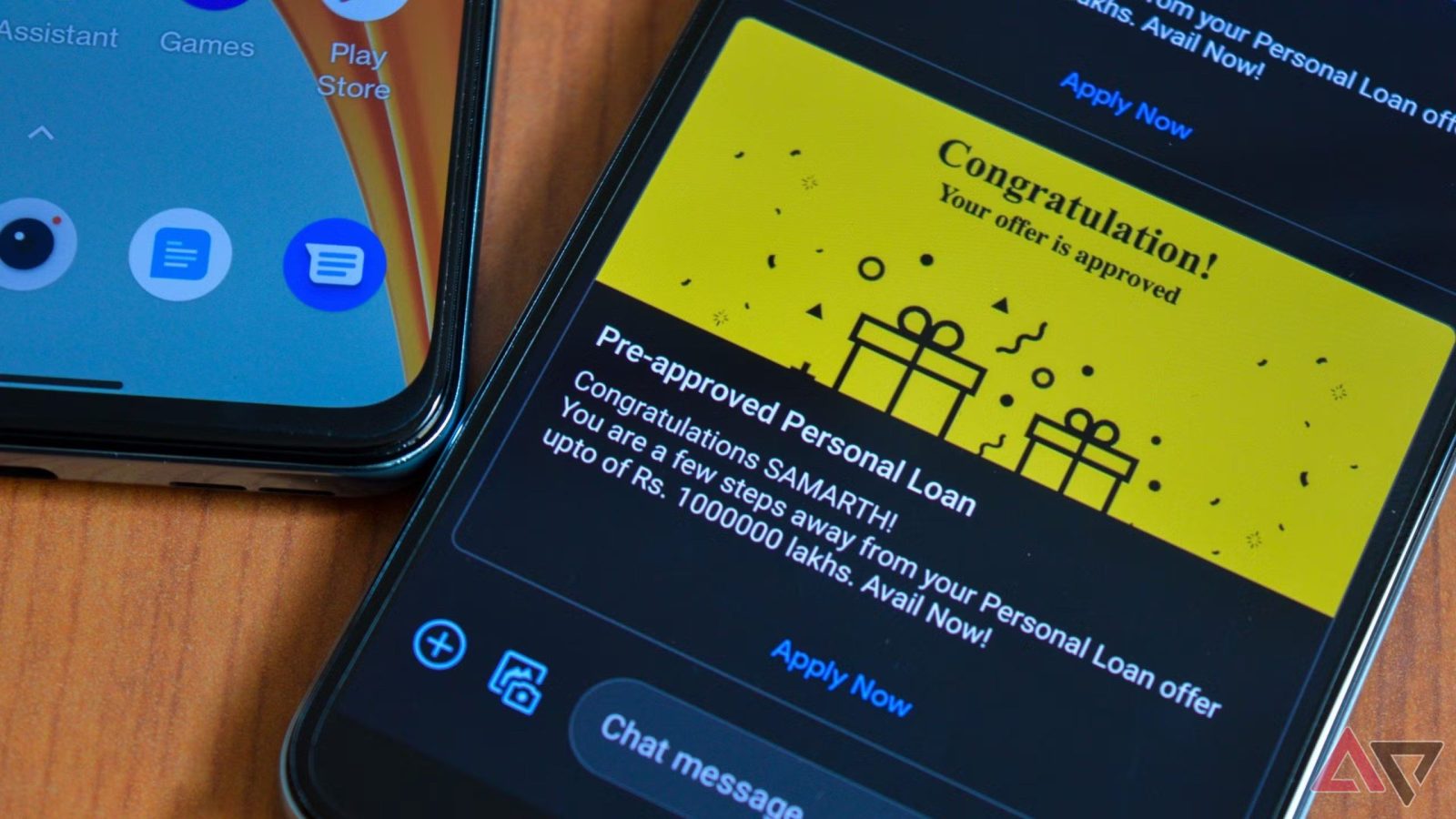Summary
- The Rich Communication Services (RCS) protocol offers major upgrades over SMS/MMS, including features like high-res images and typing notifications.
- The RCS adoption push was fueled partly by the industry’s desire for improved automated marketing and streamlined engagement.
- RCS advertisement, often powered by AI chatbots, will almost certainly become more widespread.
Built to replace two aging standards, the Rich Communication Services protocol offers a massive functionality upgrade over old, tired SMS and MMS messages. Google Messages began supporting it at the end of 2019 and spent years feuding with Apple in an apparent attempt to encourage adoption. Since then, a bunch of carriers have tried and failed at their own implementations, the Universal Profile helped ensure interoperability, and Apple eventually caved.
That means everybody, Android or iOS, now gets to enjoy cutting-edge messaging technology filling their inbox with automated messages from companies they might not want to hear from (Source: Android Authority). And even as Google delivers various add-on features to reduce spam, there’s one thing it’s not telling you. The mobile industry explicitly pushes RCS technology as a way to regain control over the business-to-consumer engagement pipeline and greatly streamline automated marketing messaging. It’s not even really a secret, so don’t expect it to go away anytime soon. And expect AI to be closely intertwined.
A tale of two text messages
It was the best of protocols, it was the worst of protocols
RCS lets you customize the color of your bubbles, but still won’t solve humiliating blue bubble discrimination.
RCS has significant advantages over SMS and MMS, including live typing notifications, better integration with other software, high-resolution images, and the potential for end-to-end encryption. It boasts a similar feature set to WhatsApp and Telegram, which most regions outside North America and China have relied on over SMS for years. With US smartphone users strangely resistant to third-party messaging platforms, the region needed an upgrade. RCS can provide it.
But enhanced communication between friends and family is just one side of the industry’s two-pronged motive for implementing the new standard in the exact way it has. The lesser-known motivation? You guessed it: advertising.
We’re not saying carriers, smartphone developers, and other industry groups pushed for RCS adoption exclusively to supercharge marketing spam. But the GSMA, the industry working group responsible for spearheading the standard’s development, isn’t trying to hide anything. This GSMA whitepaper explains how RCS Business Messaging (or RBM) is engineered to simplify reaching consumers with automated materials and streamline brand engagement.
Related
Why RCS spam is so infuriating
Is this really the future of cellular messaging?
RCS spam has plagued users since shortly after the protocol became popular. It got so bad in India three years ago that Google put a blanket moratorium on all forms of RBM just to stop the bleeding. As users from South Asia to the Americas continue to report, unwanted RCS advertisements remain rampant to this day. Now that iOS users have been invited to the spamfest, nobody has to feel left out.
RCS as an upgrade to A2P [application-to-person] SMS Messaging and the features that it can provide give operators an opportunity to take more of the revenue share of digital marketing spend. These features mean that RCS can be used to replace app development and email campaigns by brands. — GSMA, the industry group behind RCS development
It’s a powerful advertisement for companies to dive fully into RCS implementation. No more developing expensive, bespoke apps just to provide customer service or spread the world about the latest sales. No more convincing interested demographics to sign up for a loyalty program using an email account. The RCS protocol’s ability to integrate with a phone’s software ecosystem lets a marketing department keep everything pretty much in-house.
Companies no longer have to struggle with the whims of companies like Meta, Telegram, or X/Twitter to provide customer service and advertisements, because RCS is an open standard. Its live-action, full-featured design intends for consumers to do all the required interacting via their favorite messaging app, which should, logically, reduce friction and increase engagement. Considering how that’s a major purpose of RCS adoption, there’s no reason automated RBM messaging would ever try to completely squash what many users consider spam.
Related
But wait, there’s more — and it’s AI
Generating ad materials and customer service replies
See? AI dialogue is completely indistinguishable from person-to-person conversation.
In another sign that RCS spam is here to stay, Google and the three major US carriers have agreed to adopt Clerk Chat, a refined platform for delivering commercial RCS messages. Clerk Chat’s promise of “swipe-through carousel displays of upcoming events” essentially translates to a slideshow of visual advertisements, complete with an in-platform option to make purchases. The initiative’s stated goal of giving users a “concierge-like experience” sounds fancy, until you remember that a quality concierge requires access to certain sensitive details like a client’s identity, itinerary, and payment information.
Naturally — because no 2020s tech product is complete otherwise — AI models and LLM chatbots figure to feature heavily within this user-friendly, business-friendlier messaging standard and its increased usage and development. If you’ve received illicit spam any time recently, some portion is likely sourced from AI. And as corporations continue to take further advantage of the tools the industry has given them, we’ll only see increased engagement with Turing test-passing robots.
Many US smartphone users simply don’t answer the phone anymore, due to the high rate of spam calls. With built-in ad-focused mechanisms, it’s frustrating to see RCS potentially heading in that direction from the jump. Nonetheless, there is promise that the advanced messaging protocol can really improve customers’ experiences if the spam doesn’t get too heavy-handed or AI too out of pocket.
Plus, at least the chatbots are convincing.
Related

Leave a Reply